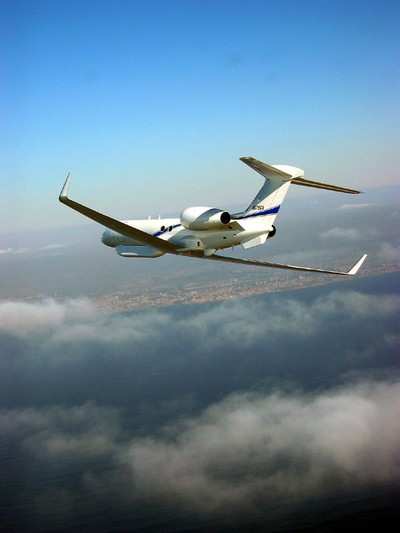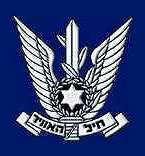Israeli Radar Plane Superior To USAF E-3 In Some
Ways
The State of Israel is now flying a state-of the-art Phalcon
Airborne Warning and Control System (AWACS) surveillance aircraft
that in some ways is superior to the Boeing E-3's flown by the US
Air Force.

The new aircraft, based on a Gulfstream G-550 platform, is
called the Eitam which means "Sea Eagle" in Hebrew. Israeli
officials marked the arrival of the first aircraft at a ceremony
attended by numerous US and Israeli dignitaries Sept. 19 at Lod Air
Force Base near Ben-Gurion Airport in Tel Aviv. This is the
first of three aircraft scheduled to be delivered over the
next three years. The $50 million Gulfstream, considered the most
prestigious and luxurious of all executive business aircraft,
departed Savannah, GA and refueled in Canada and Ireland before
arriving at its new home.
Designed to offer a long range supplement to Israel's fleet of
smaller, less capable surveillance models, Israel plans to put the
Phalcon to work almost immediately. A long-range detection
capability is considered crucial in light of Iran's publicly
stated policy of wiping Israel off the map -- the Phalcon provides
an effective tool for monitoring the Iranian war machine.
Designed and built by Israel Aircraft Industries and its
subsidiary, Elta Systems, the Israeli AWACS carries a
home-grown, conformal phased-array radar, and other equipment to
capture and analyze enemy electronic transmissions. This
electronic package fits underneath the Gulfstream fuselage and is
designed to be aerodynamically neutral. It also has a
communications system that can handle satellite signals as well as
a wide array of other transmissions. There are six personnel on
board to handle all this gear, plus the flight crew, according the
intelligence review publication, Strategy Page.
As ANN reported, Israel has
already sold the same system to India with the equipment installed
on a Russian-built Ilyushin Il-76. It is also offering the Phalcon
system to South Korea in competition with Boeing which is offering
a phased array version of its own using a B737 platform.
Several years ago, Israel had planned to sell an earlier model
of the Phalcon to China, but under strenuous US and NATO
objections, the deal fell through.
 According to Strategy
Page, the Phalcon radar is, in some respects, superior to that
used by the Americans. Using phased array radar instead of a slowly
rotating dome, the Phalcon can update operators every two to four
seconds instead of 20 to 40 seconds as is the case on the E-3
version of the venerable Boeing 707.
According to Strategy
Page, the Phalcon radar is, in some respects, superior to that
used by the Americans. Using phased array radar instead of a slowly
rotating dome, the Phalcon can update operators every two to four
seconds instead of 20 to 40 seconds as is the case on the E-3
version of the venerable Boeing 707.
Israel has not had an effective long range early-warning system
since it retired its earlier fleet twelve years ago. The Eitam has
a loitering time of twelve hours and is expected to cruise at
35,000 feet.
"These projects are meant to provide us with the most advanced
radars in the world," Israel Air Force (IAF) commander
Maj. Gen. Eliezer Shkeidy said at the Sept. 19 ceremony. "The
aircraft is meant to significantly bolster the professional command
and control solution and the expansion of the operational eyes of
Israel."
Shkeidy added, "Throughout the years of Israel's existence,
defense of the skies has been the IAF's primary mission. Over the
years, however, the threats have changed... and the potential for
an existential threat to the state is taking form while the bells
of peace are still, to our misfortune, far away."
The general never uttered the word Iran.
 NTSB Prelim: Hy-Tek Hurricane HP
NTSB Prelim: Hy-Tek Hurricane HP ANN's Daily Aero-Term (05.14.25): Flight Check
ANN's Daily Aero-Term (05.14.25): Flight Check Aero-News: Quote of the Day (05.14.25)
Aero-News: Quote of the Day (05.14.25) ANN's Daily Aero-Term (05.15.25): Primary Radar
ANN's Daily Aero-Term (05.15.25): Primary Radar Airborne 05.12.25: $1M Flying Car, Marion Airport Saved, AirVenture Cup
Airborne 05.12.25: $1M Flying Car, Marion Airport Saved, AirVenture Cup




